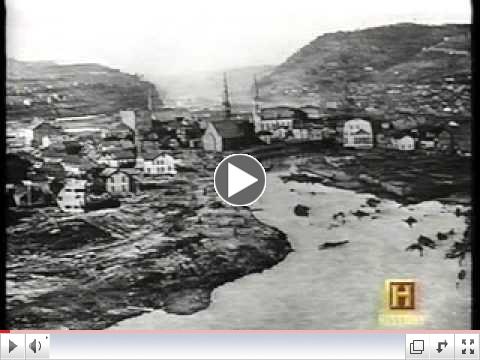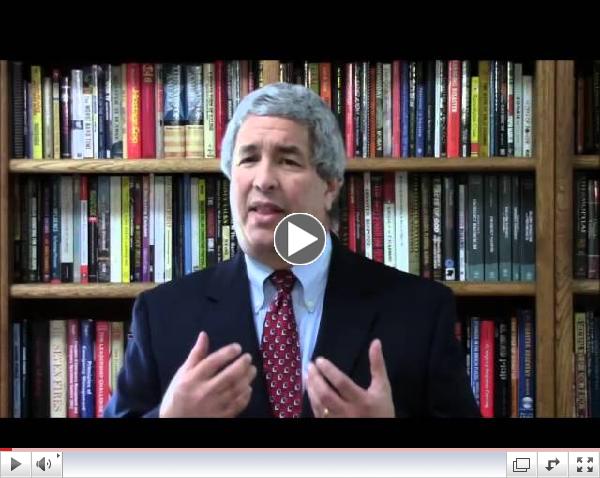|
Monthly Video
 | | The Johnstown Flood of 1889 |
May 31 is the 125th anniversary of the Johnstown flood of 1889 that claimed the lives of over 2000 people. This short documentary from the History Channel chronicles the negligence that led to the disaster and the aftermath. Johnstown flooded again in 1936 and 1977, highlighting the importance of remembering the lessons of history.
|
Blog Highlights
The following are excerpts from my blog
Canton on Emergency Management. Please visit my blog to see the rest of my articles.
|
|
Leadership Coaching
By special arrangement with Sonoma Leadership Systems, I now offer the renowned Leadership Challenge® program on an individual basis designed exclusively for emergency managers
Benefits
-
Gain a better understanding of your leadership strengths and weaknesses.
-
Clarify your fundamental values and beliefs
-
Identify areas for immediate and long term improvement
-
Create a Personal Development Plan with measurable and achievable goals
What You Get
- A personal assessment of your leadership practices using the Leadership Practices Inventory®
- An individual 1-hour telephone counseling session with me to review your LPI® results
- A copy of Kouzes and Posner's The Leadership Challenge
|
 | | My Website |

 My Blogs My Blogs
Follow Me
 | |
Newsletter Archive
|
|
|

Welcome to the May issue of Emergency Management Solutions.
Please excuse the late posting of this newsletter. It's been a month of non-stop travel, both business and pleasure.
This month I share some thoughts on the Korea ferry tragedy that occurred last month. These thoughts were provoked by a series of questions that my sister-in-law asked me. I hope you find them useful.
Tomorrow is the 125th anniversary of the Johnstown flood in 1889, one the seminal events in disaster history, so this month's video is a brief historical retrospective of that disaster. This month's book is also a step back in time to when aircraft were being hijacked at the rate of one per week. I think you'll find both extremely interesting.
Regards,
|
|
_________________________________________________
Featured Article
Public Safety, Public Morality
Thoughts on the Korean ferry disaster
|
On April 15 the MV Sewol, a ferry boat of some 6,825 tons, departed Incheon, Korea enroute to Jeju, a journey of about 250 miles. The ship carried over 450 passengers, mainly high school students and teachers on a field trip and a crew of 18, roughly half of the 900+ passengers for which she was rated.
The vessel also carried almost 4000 tons of cargo, well beyond her rated limit of 987 tons. To compensate, the crew reportedly discharged a considerable amount of ballast water, making the vessel top heavy.
The vessel had been renovated in 2012 to add additional passenger cabins to the upper deck before being placed back in service in 2013, further adding to her top heaviness. The vessel had reportedly passed a Coast Guard safety inspection two months previously.
Around 9:00 AM the following morning, the vessel reported taking on water and being in danger of capsizing. The Korean navy and nearby vessels rushed to the scene but their efforts were largely in vain. Confusion aboard the vessel and lack of leadership from the captain meant that few of the passengers were saved.
| |
CLICK HERE TO READ THE REST OF THIS ARTICLE
_______________________________
If you are having trouble viewing my featured article, try clicking on the link at the top of the page. You can always find my articles in the white paper section of my blog site, Canton on Emergency Management.
|
Professional Development
When you've been around as long as I have different initiatives sometimes blur together. It doesn't help that training materials and guidance information aren't always current with the latest doctrine. There are good reasons for this - it takes time to develop implementation plans, let contracts for training design, and publish course material. However, it does mean "flying blind" for the first few years of a new initiative. Case in point is the National Preparedness Goal, which was issued in 2011. This past March, the Federal Emergency Management Agency announced the introduction of four new courses to support the National Preparedness System:
- IS 200 National Preparedness System
- IS 2001 Threat Hazard Identification Risk Assessment
- IS 2800 National Response Framework (replaces IS 800)
- IS 2900 National Disaster Recovery Framework
The courses are supposedly offered through the Emergency Management Institute's Independent Study Program but I could only find the IS 2900. IS 2001 is listed but shows as still under revision. Guess we need to wait just a bit longer. |
|
|
A young friend of mine recently faced a decision that has the potential to alter his life. He was recruited by another company who offered him a substantial increase in salary and better working conditions than his current job. However, he had been in his current position for almost 5 years and felt a great sense of loyalty to his current company. This company had hired him following his internship and had promoted him to a position of responsibility.
My friend knew that they were advantages and disadvantages to either accepting the new position or remaining in his current position. He gave himself plenty of time to make this decision and spent considerable effort thinking about the decision and potential consequences. When he thought that he had gathered sufficient information and was close to decision he decided to seek out his mentor and share his reasoning with him.
We sometimes make the mistake of thinking that we have to do everything alone. And it is true that sometimes we cannot share our decision making process with those closest to us, whether they be family or coworkers. This is the time where it really helps to have someone within our profession who is divorced from the consequences of our decision and on whose judgment we can rely.
Note however, that my friend did not ask the mentor to make the decision for him but rather used him as a resource to review his decision-making process and make sure he had not overlooked anything in his reasoning. This is the true role of the mentor: to assist us by serving as an impartial check on our reasoning. If you do not have a mentor, you need to think about who could fulfill this role for you. You need to establish a relationship that is ongoing and develops trust and not wait until you need their help.
And my young friend? After considerable thought and his discussion with his mentor, he accepted the new position.
|
|
From the Bookshelf

The Skies Belong to Us: Love and Terror in the Golden Age of Hijacking
by Brendan I. Koerner
Ostensibly the story of the misfit couple who pulled of the longest-distance aircraft hijacking in American history, this book offers much more. The story of how the two lovers escaped to Algiers with a half-million dollar ransom is fascinating enough but Koerner provides a context for the crime with a concise and detailed history of hijacking in the US.
In this age of Homeland Security it is easy to forget that there was a time when security was virtually non-existent at airports. Starting in 1968, however, aircraft were hijacked nearly once a week. Koerner details the motivations behind the hijackings and shows how they changed over time. Most interestingly, he recounts how government attempts to increase security were resisted by the airlines themselves and how many of those efforts, still in use today, proved ineffective.
The Skies Belong to Us offers some very real lessons for us in the age of Homeland Security.
______________________________________________
 I nterested in more books on emergency management and related topics?
Check out my bookstore at:
|
|
Looking for a Speaker?
Need a speaker for your next conference? I offer keynotes, seminars and workshops.
 | | Three Reasons Why I'm the Right Speaker for Your Conference |
|
|
Speaking Engagements
July 17 The Future Campus Safety and Security,
Emergency Management Magazine, Denver, CO
September 30 The Future Campus Safety and Security, Emergency Management Magazine, Newark DE October 15 The Future of Campus Safety and Security, Emergency Management Magazine, College Station, TX
|
|
|
|
|